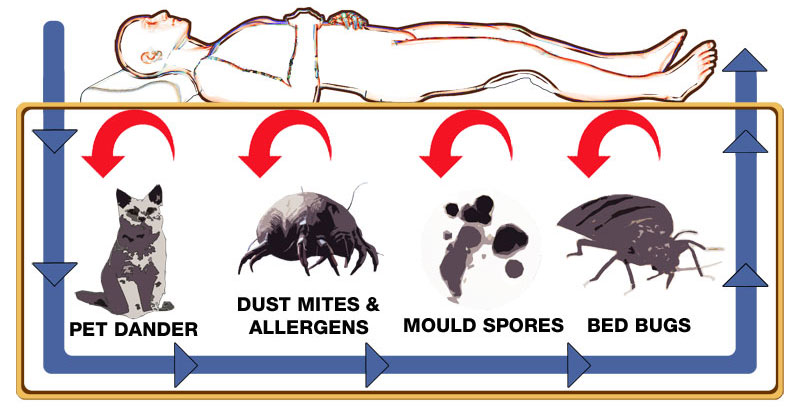Description
This dust mite allergy mattress cover is for those of us that don’t like using chemicals. An 100% cotton mattress encasement that doesn’t use synthetics to reduce dust mite exposure. The average pore size of this finely woven cotton is 3.2 microns (one-millionth of a metre). Fabrics with a pore size of 10 microns or below have been proven to block dust mite and other common household allergens*.
Very Finely Woven 100% Cotton Dust Mite Allergy Mattress Cover Lets the Air Flow but Prevents the Passage of Allergens From Your Mattress to You.

Using a dust mite allergy cover keeps the dust mites in your mattress and their food source, your dead skin, is kept removed from the mites.
You can’t wash your mattress like you can wash your sheets. Our mattress covers allow airflow, but prevent dust mites, dust mite allergens, most moulds, bed bugs & cat allergens contained in your mattress from reaching sensitive skin and airways.
- Laboratory tested to block dust mites and allergens.
- 100% pure, breathable cotton.
- No added chemicals or harsh, anti-allergy chemical treatments.
- High air permeability rating makes for a cool and ultimately comfortable fabric.
- Pre-treated with steam and pressure to shrink and hold allergen-blocking pore size through repeated washing.
- Made for the duration, double-stitched with at least 12 stitches per inch to ensure strong seams.
- Heavy-gauge, rust-free nylon zips.
- Those with a latex sensitivity needn’t worry – our dust mite allergy covers are latex free.
- Lifetime manufacturer warranty.
As a hay fever sufferer, I personally test the products available on this website. I read medical and scientific publications to ensure that only sound scientific research is behind the products that I make available on Allergy Australia.
I’ve used this dust mite allergy mattress cover personally and can vouch that it is effective in reducing the rhinitis symptoms that I normally experience overnight and upon waking up, such as sniffles, puffy eyes and respiratory congestion (wheeziness).
*Vaughan, J, T Mclaughlin, M Perzanowski, and T Plattsmills. “Evaluation Of Materials Used For Bedding Encasement: Effect Of Pore Size In Blocking Cat And Dust Mite Allergen.” Journal of Allergy and Clinical Immunology 103.2 (1999): 227-231. Print.








Reviews
There are no reviews yet.